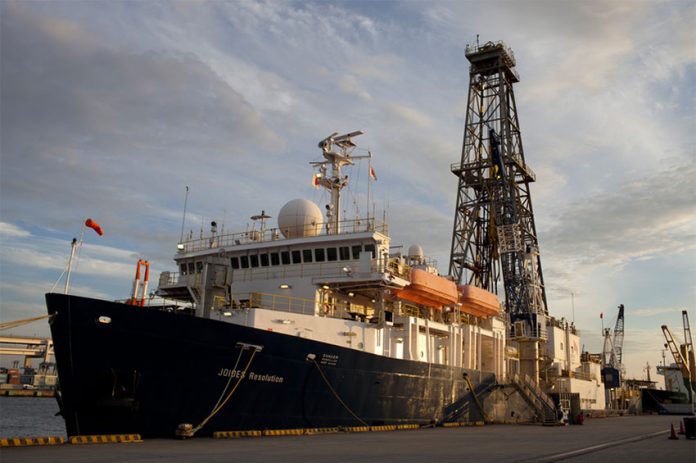Three Mexicans are part of a team of 33 scientists from nine countries currently studying the seabed of the Gulf of California off the coast of Guaymas, Sonora.
For the next two months, scientists onboard the JOIDES Resolution, a research vessel that drills into the ocean floor to collect samples of sediments, will study the tectonics, magmatism, carbon cycling and microbial activity of the Guaymas Basin.
The expedition, which set sail on Saturday, is part of the International Ocean Discovery Program, a marine research initiative.
Ligia Pérez Cruz, a researcher at the Institute of Geophysics of the National Autonomous University (UNAM), told the newspaper El Universal that research in the Guaymas Basin is important because the Pacific and North American tectonic plates meet there.
Manet Estefania Peña of the Autonomous University of Baja California said the ocean floor in the basin is breaking up and that the rupturing process is causing magma to shoot into the ocean from within the earth’s crust.

As soon as the magma reaches the water, it cools and hardens to form a new ocean floor, she said.
“Drilling the subsoil will allows us to obtain geological records, rocks and sediment, that speak to us about the evolution of our planet,” Peña added.
“. . . It’s like getting books from billions of years ago . . . that tell us what happened on Earth.”
The JOIDES Resolution, a 143-meter-long vessel with the capacity to dig 8,235 meters below the seabed, will carry out drilling at six different points in the Guaymas Basin.
Peña said the research will enable greater understanding of the tectonic plates beneath Mexico and that will allow “better planning of our cities in the future,” while Pérez said that the sediments of the Gulf of California are likely to contain a “large quantity of geothermal energy that at some point could be used.”
The UNAM researcher said that data collected by scientists could form the base of knowledge to “solve some of the problems we’re going to face on matters of energy.”
Florian Neumann, a scientist at the Center of Scientific Research in Ensenada, Baja California, and the third Mexican on board the vessel, said the research will benefit the energy industry.
“We’re going to make maps of the heat flows and in that way we’ll be able to estimate the geothermal potential of the area . In addition, we will try to identify the quantity of carbon in the basin . . .” he said.
Source: El Universal (sp)
